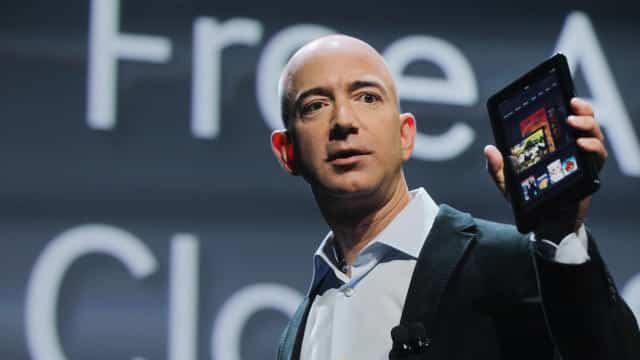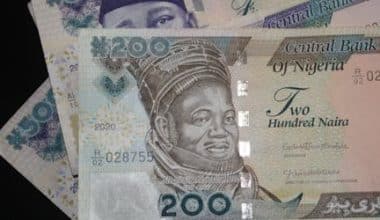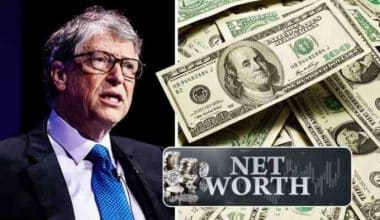Amazon is one of the most well-known names in the e-commerce industry, if not the most well-known. Despite its humble beginnings as an online bookstore, it has grown into an e-commerce behemoth with its fast and convenient delivery, dependable customer service, and perk-filled Amazon Prime membership.
With a significant competitive advantage in its core services, positive investor sentiment, and visionary leaders such as CEO Andy Jassy and founder Jeff Bezos, it’s easy to see why this company is one of the most valuable in the world.
As you sit and relax, we will review what you need to know about Amazon, ranging from its net worth to market capitalization.
How Much is Amazon Net Worth?
During the pandemic, Amazon positioned itself as a lifeline for millions of customers, but it was a powerhouse long before that. It is one of only a few companies with a market capitalization of $1 trillion, which it achieved for the first time in 2018.
Amazon split its stock 20 for 1 in June 2022, which meant that for every share an investor-owned, they received 20 shares at a pro-rated price. As a result, Amazon’s stock is no longer worth thousands of dollars per share. Amazon’s market capitalization has fluctuated over the last year, with a 52-week low of $81.43 and a high of $170.83 as of March 17. The company’s market capitalization is $1.01 trillion as of March 17’s closing share price of $98.95.
What Exactly Is Market Capitalization?
Investors frequently use market capitalization to determine the worth of a company. Multiply the number of outstanding shares by the current stock market price to calculate the market cap. Although market capitalization can help determine the value of a company, it is not always the most accurate. It does not consider a company’s financials. The figure can change due to fluctuations in share pricing.
True Valuation
Consider the following three factors that contribute the most to Amazon’s true valuation:
- Economic buffer zone and competitive advantages
- Market capitalization, revenue, and outlook
- Executive team and leadership
How much Amazon does Jeff Bezos own?
Amazon is owned by a series of organizations, with the most significant being its executive chairman, Jeff Bezos. Bezos is the company’s highest shareholder, possessing about 10% of its stock.
Alongside Bezos, the remaining shares of Amazon are held by a diversity of stakeholders, including orthodox and mutual fund investors, individual investors, and other corporate bodies.
Amazon’s employees own a little portion of the company’s stock through its employee stock ownership plan.
But, while Jeff Bezos is the most influential shareholder, it’s important to keep in mind that the ownership of the company is diversified.
In case we’re talking about individual investors, institutional or the company’s employees, the ownership of Amazon is shared among many bodies.
How much does Amazon make a Year?
When it comes to dollars, Amazon deals in billions.
We can’t say or come up with a fixed amount or figure, but Amazon earns a lot, that I can say.
Recently, CNN reported its earning to be $386.9 billion dollars in revenue in the previous year.
It can be hard to picture what those look like.
Amazon generates close to $470 billion in revenue every year. It has been on a consistent path of steady growth for the past few decades. As the internet has become more popular and easier to access, it has easily created additional ways to generate more revenue.
Its primary goal is to provide people with products that are shipped to their front doors; it has also taken time to expand its footprint.
How Much Money Does Amazon Make a Day?
No matter what you do to earn a living, chances are, you have your daily salary or earning figures. But have you ever thought about, “How much money does Amazon make a day?”
Believe me, Amazon’s e-commerce race figures might make you want to switch careers.
As of 2022, Amazon makes over $1.29 billion every day in revenue. It has grown faster during the past few years, and one of the major reasons has to do with its mobile growth. Now that we know how much Amazon makes daily, one of the main reasons is the strong mobile user market share. Let’s break down this figure even further and take a look at the revenue per hour.
Amazon Net Worth: Revenue
Amazon is one of the few companies with a trillion-dollar market capitalization. Following a strong earnings report in 2020, the company rejoined the $1 trillion club, joining Apple, Microsoft, Alphabet (the parent company of Google), and, on occasion, Tesla. Amazon’s revenue in 2022 was $513.98 billion, up 9% from $469.82 billion in 2021 and growing by tens of billions of dollars per year.
Amazon’s stock is now 16% higher than its 52-week low of $81.43 per share, bringing the company’s market cap to $1.01 trillion as of March 17, after falling below $1 trillion in November.
Despite earning $0.03 per share in the fourth quarter, the company earned -$0.27 for the year. Like fellow tech titans Apple and Alphabet, Amazon has seen its growth slow in the face of a challenging economy.
Amazon Net Worth: Competitive Advantages and Economic Moat
An economic moat, a concept used to invest by successful investors Warren Buffett and Bill Gates, occurs when a company has a significant market advantage over its competitors. Buffett would normally invest in a company with an economic moat, but Amazon has multiple.
A Review of Amazon’s Many Moats: Prime, Logistics, and More
Although competitors can do some of what Amazon does, Amazon’s core e-commerce business and logistics capabilities are economic moats. As a result, no competition will be able to match it in its entirety anytime soon.
Prime
The most obvious example is Amazon’s Prime membership, which addresses all of the customer’s needs. Prime membership contributes significantly to Amazon’s value, from free, fast shipping to Prime Entertainment and the Amazon Prime credit card. It feeds on itself, keeping customers addicted to both Amazon shopping and paying the monthly or annual subscription fee for the 5% credit card rewards.
Logistics
Amazon maintains an economic moat in logistics to achieve its shipping speeds. This moat puts Amazon in a strong position to weather the pandemic-related supply chain issues that have plagued manufacturers and retailers.
Competitiveness
Not to mention Amazon’s competitiveness in a variety of other areas. Prime Video, a streaming service that competes with Netflix and is included with a Prime membership, and cloud computing services like Amazon Web Services, which competes with Microsoft Azure, are among the more successful of these.
AWS is in the spotlight due to its overwhelming market dominance. According to Statista, as of the fourth quarter of 2022, AWS had 32% of the cloud provider service market share, while Microsoft Azure had roughly 23% and Google Cloud had 10%.
COVID-19’s Beneficial Business Effects
During the pandemic, Amazon’s revenue and value increased as the company stepped up to the plate in response to increased online purchasing. Net sales increased 9% in the fourth quarter of 2021 compared to the same quarter in 2020 and increased 22% for the year.
Amazon pushed Prime Day forward to Q2 in order to keep retail sales strong, giving consumers a head start on holiday shopping. And the push went on, resulting in Amazon’s most successful Black Friday to Cyber Monday sale in terms of its retail sales and third-party sellers.
Amazon’s stock rose as a result of its great success in emerging as a reliable top player in the pandemic, as well as the success of many other companies. However, Amazon’s remarkable growth will be tempered in 2022 by consumers’ return to stores and economic factors such as inflation, rising interest rates, and the threat of a recession.
How does Amazon make money?
Amazon makes money, contributing to its net worth, through its retail, subscription, and web services, among many other channels.
Amazon sells its products.
The majority of the products that you can purchase on Amazon are owned by the company itself. Like many other stores, it buys products where there is a high supply and low demand and then sells them where there’s a low supply and high demand to make a profit.
If it helps, see it as a big online convenience store.
Amazon gets a cut from third-party sales.
Even when other people sell their items or products, the company still gets some of the profit. Amazon takes care of the legwork for someone looking to sell things. It makes it easy for them to organize their inventory and expose it to numerous potential customers at once. It can even take the hassle of setting up the delivery of their merchandise and collecting payment.
Which Country buys the most from Amazon?
You can only get to know which country buys from Amazon the most from its generated revenue. With over $356 billion in net sales, the United States was Amazon’s biggest market in 2022. Germany was ranked second with $33.6 billion, ahead of the UK with $30 billion.
That’s to say that over 30% of its users and buyers are from the United States.
- BUSINESS WEBSITE: What You Should Know Before Creating One
- HOW MUCH IS AMAZON WORTH 2023? (Revealed!!!)
- How To Be An Amazon Seller: Best 2023 US Practices & All You Need
- Jeff Bezos Net Worth 2023: How he Became a Billioniare?






